What Type Of Money Do They Use In Cuba
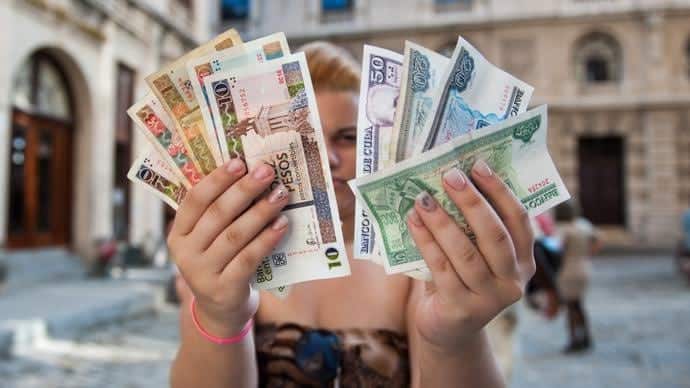
Cuban Currency: The Ultimate Guide for Travelers (2021 Update)
As a first-time traveler to Cuba, you probably have many questions about the Cuban currency: What's the official Cuban currency? Can you use US dollars in Cuba? Can you pay with a credit card or debit card? Does Cuba still impose a 10% tax on US dollars? Do they even have ATMs in Cuba? In this article, we answer these questions and more.
Right off the bat, we can tell you that the Cuban currency system is super complicated to deal with as a traveler. But don't panic. We will cover absolutely everything you need to know about using money in Cuba.
1. What is the Currency in Cuba?
The first thing you should know about the Cuban monetary system is that Cuba used two official currencies until December 31st, 2020: the CUP (Cuban Peso) and the CUC (Cuban Convertible Peso). However, it all changed in January 2021, when Cuba eliminated the CUC and left the CUP as the only official Cuban currency. Therefore, a s a traveler, you will use the CUP.
The (Eliminated) Cuban Convertible Peso (CUC)
The Cuban Convertible Peso (CUC) was one of Cuba's two official currencies and most frequently used by visitors. However, contrary to what many outdated articles say on the Internet, you can no longer use the CUC in Cuba.
This is because Cuba eliminated the dual currency system on January 1st, 2021 when the Cuban Peso (CUP) became the only official currency in Cuba. If you travel to Cuba before mid-2021, you may still see some CUCs in circulation because Cuban residents have until July 2021 to exchange their remaining CUCs into CUPs.
The Cuban Peso (CUP)
The CUP (also locally known as "moneda nacional" or MN) is the primary Cuban currency. It is used by both residents and visitors alike.
The CUP is available in bills of 1, 3, 5, 10, 20, 50, 100, 200, 500, and 1000.
Please stick with us because we will talk a lot about the Cuban Peso. But first, let's point out the physical difference between the CUC and CUP.
The tangible difference between the CUC and CUP
You've never been there. Never used Cuban money. So, how are you supposed to know the difference between the CUC and the CUP and avoid getting scammed?
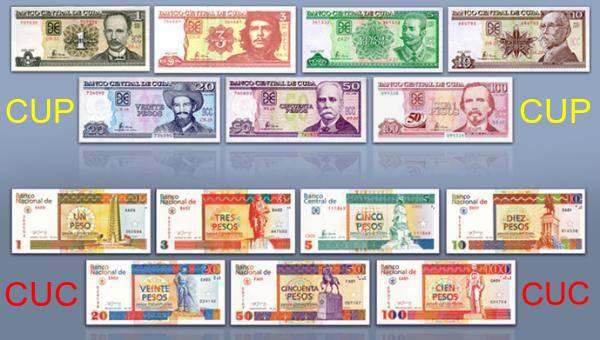
Here is the secret: the CUP bills have faces. If you expect to receive CUP in a transaction and don't see a face on the bill, you will be getting CUC instead! The CUC bill also says "pesos convertibles" right at the center.
2. What Cuban Currency to Use as a Visitor?
For most of your expenditures on the island, you must use CUP. All resorts, hotels, airports, restaurants, and tourist attractions will accept CUP.
It would help if you always had the lower denomination CUP bills at hand to cover small expenses such as street food, bus fare, flea market finds.
With that said, if you are traveling with Euros or Pounds, we suggest you take some to Cuba. This is because hard foreign currencies are welcome at private facilities, such as "hostales" (private rooms) and "paladares" (private restaurants). Additionally, while you can tip in CUP, we suggest using your home currency for tipping in Cuba .
3. Can You Use the US Dollar in Cuba?
Only Cuban residents are allowed to spend US dollars at the so-called " dollar stores " ("tiendas MLC"). As a traveler, you cannot use US dollars in Cuba since the Government is pushing for the de-dollarization of the economy. Even the currency exchange offices in airports are no longer exchanging US dollars for CUPs. You can't use credit or debit cards issued by US banks either.
Therefore, if you are traveling to Cuba from the US, you will be better off exchanging your US dollars for Euros or Pounds before landing in Cuban territory.
4. Where to Exchange Cuban Currency?
Travelers can exchange Cuban currency at banks, hotels, and government currency exchange houses (CADECA). CADECA offices are located in airports, hotels, resorts, and shopping centers. CADECA offices are the safest and most reliable places to exchange currency.
Keep in mind that, as part of the travel restrictions enforced by the Cuban Government to curtail the spread of the COVID-19 epidemic, CADECA offices may experience limited capacity and reduced hours.
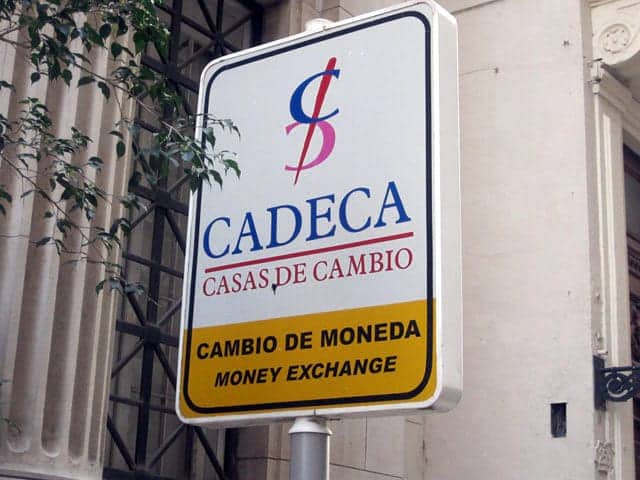
Please, be aware that it is very unlikely that you will get Cuban currency in advance. If you manage to do it, keep in mind that you can import up to 2,000 CUP, according to a recent resolution from the Aduana General de la República de Cuba (customs).
5. The Cuban Currency Exchange Rate
The exchange rate depends on whether you want to buy or sell CUP and on the foreign currency you are using for the operation. The international exchange rate determines the value of international currencies against the Cuban Peso.
At each CADECA office, you will notice a TV screen displaying the daily exchange rates, like this:
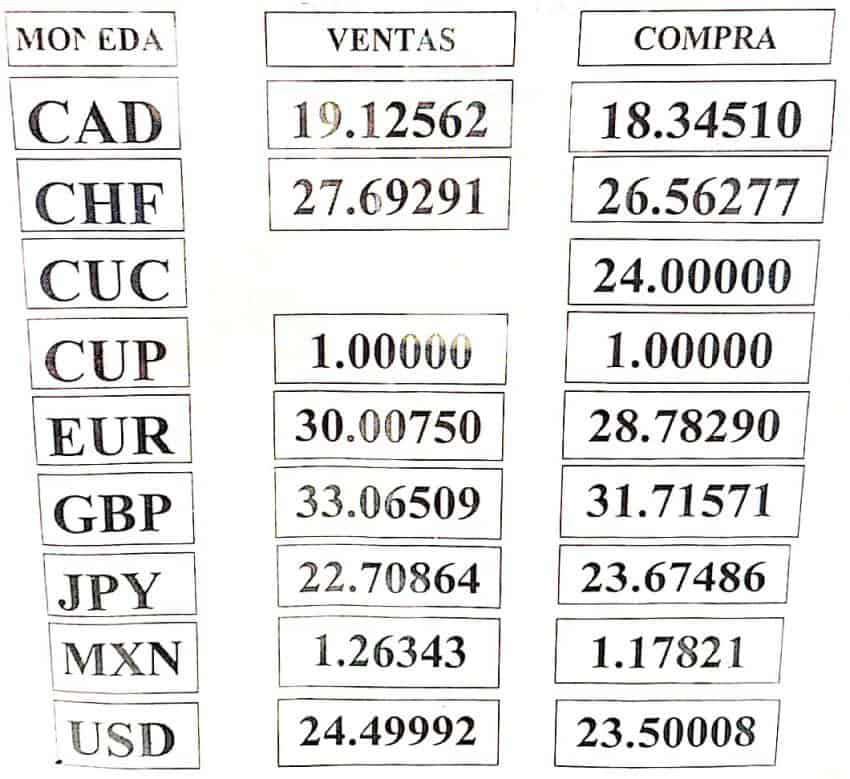
Please, keep in mind the above table may be outdated. Consult CADECA's website to check the current exchange rates. The column Compra/Buy indicates the exchange rate at which CADECA buys the currency. In contrast, the Venta/Sell column shows the exchange rate at which they sell the currency.
Whatever currency you want to sell to CADECA, you will need to multiply the amount of money you want to exchange by the exchange rate listed on the Compra/Buy column.
For example, if you want to exchange 100 CAD to CUP, the math is 100*18.3451 ≈ 1,835.5. Yeah, that's right, you will get around 18.35 CUP for 1 CAD… exactly how it says in the table.
You should also know that the Cuban currency exchange rate may be slightly more expensive at CADECA offices in hotels, ports, and airports. The exchange rates are also updated twice a week.
6. Avoid Currency Scams
Aside from official currency exchanges, there are a few unofficial ways as well.
You can often stumble upon these "opportunities" just outside of currency exchange offices and local shops. Often, people willing to make unofficial exchanges will pitch you on attractive offers.
Although Cuba is a relatively safe country, currency scams are not uncommon, and tourists are typically the victims. The currency scam can go one of two ways: 1) you receive forged currency in exchange for your (legitimate) money; or 2) you get change in CUC, which was eliminated, instead of CUP.
You could lose a lot of money this way!
With that said, if you trust your host, you can ask him/her to exchange your home currency at CADECA's rates. Certain hosts and private restaurants may also accept foreign currency.
Finally, be aware that pickpocketing is common in large cities like Havana . Thus, a travel money belt may be handy to protect your money and small valuables while walking the streets of Cuba.
7. What is the Best Currency to Bring to Cuba?
It all boils down to bringing the foreign currency that has the highest possible conversion rate in Cuba. In terms of conversion value, the British Pound Sterling and the Euro are the best currencies to bring to Cuba.
You can also exchange the following foreign currencies in Cuba:
- Canadian Dollar (CAD)
- Swiss Franc (CHF)
- Euro (EUR)
- Pound Sterling (GBP)
- Japanese Yen (JPY)
- Mexican Peso (MXN)
- US Dollar (USD)
8. Can You Use Credit Cards in Cuba?
In most cases, yes. Unless they were issued by a US bank or a subsidiary of a US bank.
However, one of the most important travel tips for Cuba that must know is that Cuba is primarily a cash country. So, plan on paying for most of your expenses with hard currency!
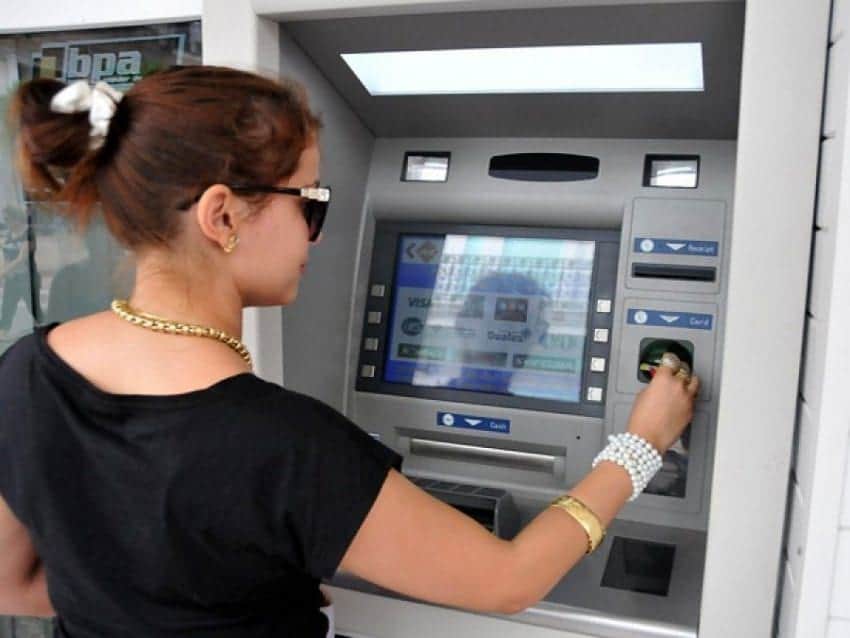
9. Prepaid Cards in Cuba
On June 15, 2021, the Cuban Government launched prepaid cards exclusively available to foreign visitors. BANDEC (a Cuban bank) issues these cards, and you can use them to pay for goods and services at facilities that accept credit cards, such as hotels, state-operated restaurants, and certain retail stores.
The Cuban Government hasn't said much yet about how these prepaid cards work, but here are a few facts you must know:
- The prepaid cards are valid for two years.
- You can buy prepaid cards in CADECA's offices.
- You will need your passport to acquire a prepaid card.
- There is a 5 USD processing fee, and you cannot pay for it in USD (lol).
- To make things even more complicated, the prepaid cards are printed with denominations in US dollars (!) in the amount of 200 USD, 500 USD, and 1,000 USD.
- The card won't display your name on it.
- You will need to set up a PIN.
- You cannot transfer money to prepaid cards from other cards or bank accounts.
- You can withdraw money, but only in CUP.
- The bank wouldn't replace your card if you lost it.
We will keep this section updated as we gather more information about using prepaid cards in Cuba.
10. ATMs in Cuba
If you want to get cash, you can withdraw money from Cuban ATMs using either a debit card or a credit card.
You may be charged a bank commission fee that can cost anywhere between 3 to 12% per transaction.
ATMs in Cuba are not as common as they are in other parts of the world. Currently, Cuba has 780 cash machines with plans to install another 200 ATMs in the coming year. Most of Cuba's ATMs are located in large cities and popular tourist destinations like Havana, Santiago de Cuba, Holguin, and Matanzas (Varadero).
11. Using CUPs at Airports in Cuba
UPDATE: As of May 21, 2021, CADECA offices will no longer offer currency exchange services in Cuban airports. Due to the low influx of tourism amid the COVID-19 pandemic, the company lacks enough funds to sell foreign currencies. This may be a temporary measure; we will keep you updated.
Although you can use CUPs in facilities at Cuba airports, we recommend you exchange your leftover Cuban pesos before checking in at the airport because:
- The long lines at the airport's CADECA office will make you cringe.
- Some travelers have reported that CADECA offices at airports won't exchange certain amounts of CUPs because they might not have the equivalent amount of your home currency available.
- You are not allowed to export more than 2,000 CUP anyway. Airport authorities will likely confiscate any amount over that limit.
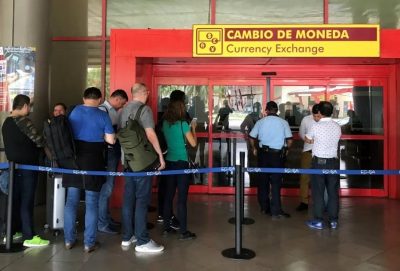
Perhaps, you will want to keep 25-50 CUP to buy the NAUTA card to get Cuban WiFi at the airport.
Here some other crazy facts that you should know about using foreign currencies at Cuban airports:
- Depending on how much of your home currency is available at airport facilities, you might get change in a different currency!
- Many attendants won't take coins (!). (They said that Cuban banks might have an issue with it when depositing the coins later).
- Some travelers have reported that the airport facilities won't take bills with tears or writing on them.
Mission Accomplished?
As you can see, Cuba's currency system is as unique as the island itself.
While this can catch a visitor off guard if they don't know what to expect, the currency system is much easier to navigate if you know a few key pieces of information like what kind of currency to use, how to exchange it, and how to use debit and credit cards during your stay.
Keep this guide handy during your stay in Cuba–together, we'll make sure you have a great trip! At least, that's what we hope.
So, what do you think? Let us know in the comments!
What Type Of Money Do They Use In Cuba
Source: https://www.tourepublic.com/blog/cuban-currency/
Posted by: townepelvery.blogspot.com

0 Response to "What Type Of Money Do They Use In Cuba"
Post a Comment